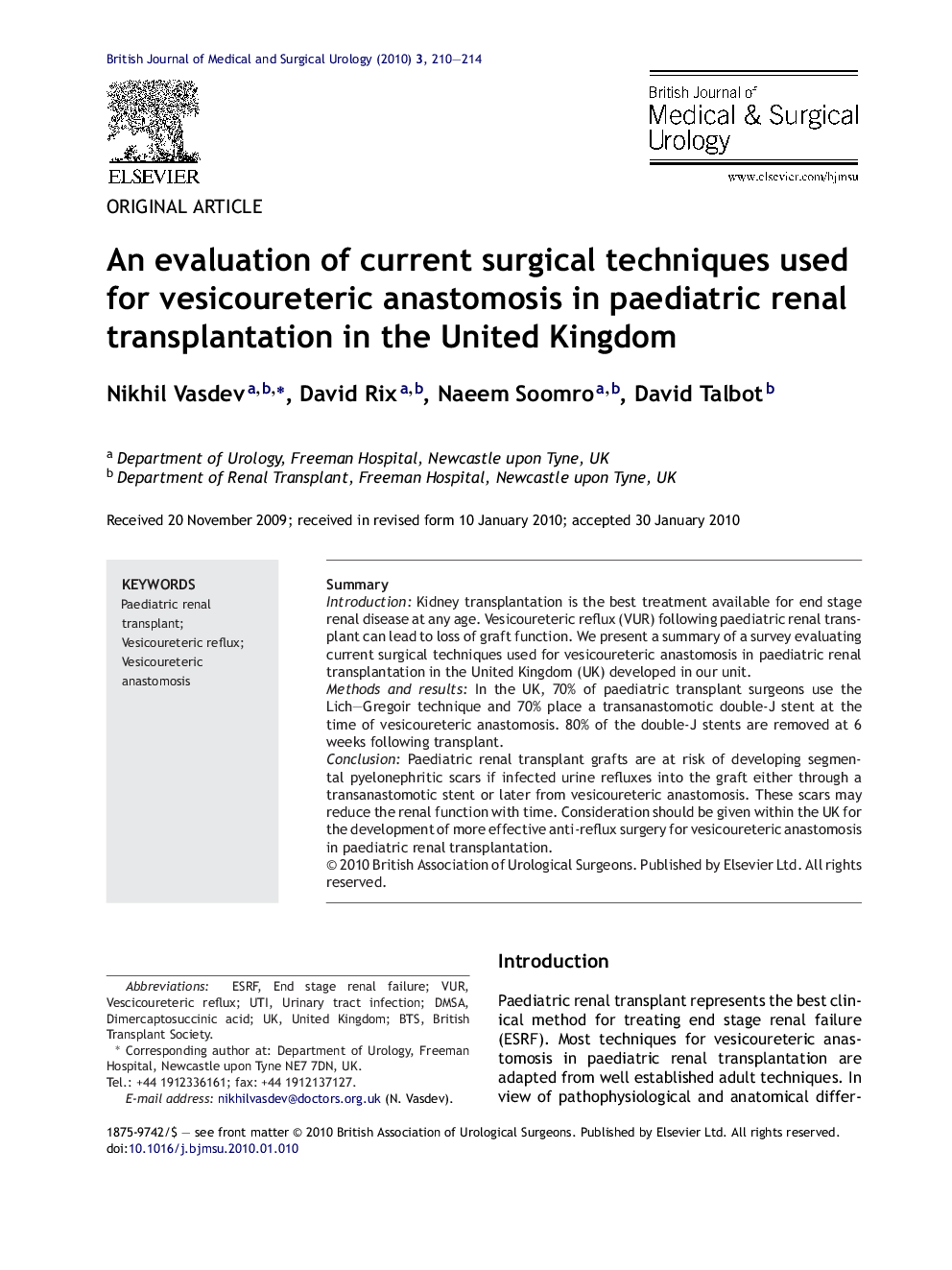| Article ID | Journal | Published Year | Pages | File Type |
|---|---|---|---|---|
| 4268468 | British Journal of Medical and Surgical Urology | 2010 | 5 Pages |
SummaryIntroductionKidney transplantation is the best treatment available for end stage renal disease at any age. Vesicoureteric reflux (VUR) following paediatric renal transplant can lead to loss of graft function. We present a summary of a survey evaluating current surgical techniques used for vesicoureteric anastomosis in paediatric renal transplantation in the United Kingdom (UK) developed in our unit.Methods and resultsIn the UK, 70% of paediatric transplant surgeons use the Lich–Gregoir technique and 70% place a transanastomotic double-J stent at the time of vesicoureteric anastomosis. 80% of the double-J stents are removed at 6 weeks following transplant.ConclusionPaediatric renal transplant grafts are at risk of developing segmental pyelonephritic scars if infected urine refluxes into the graft either through a transanastomotic stent or later from vesicoureteric anastomosis. These scars may reduce the renal function with time. Consideration should be given within the UK for the development of more effective anti-reflux surgery for vesicoureteric anastomosis in paediatric renal transplantation.
